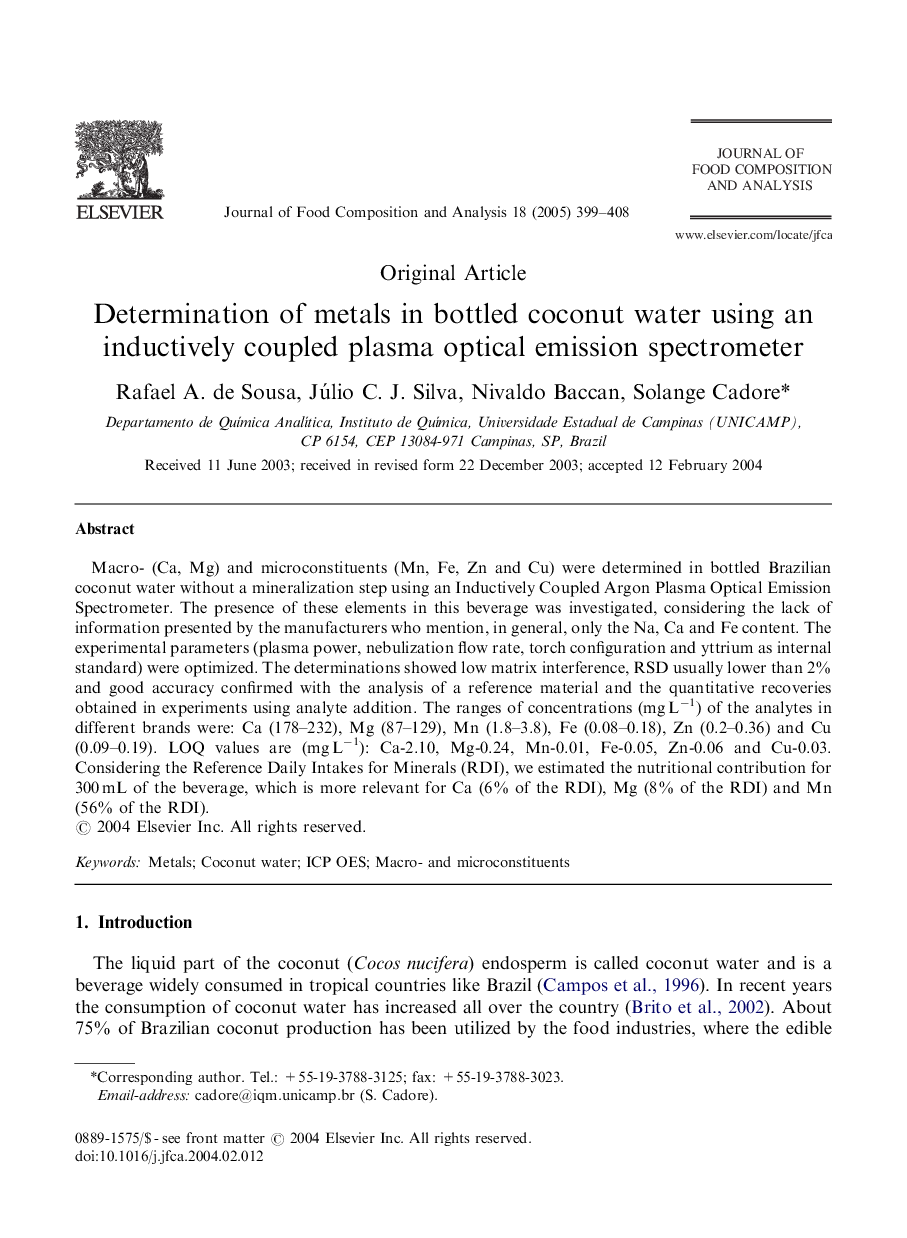| Article ID | Journal | Published Year | Pages | File Type |
|---|---|---|---|---|
| 10552901 | Journal of Food Composition and Analysis | 2005 | 10 Pages |
Abstract
Macro- (Ca, Mg) and microconstituents (Mn, Fe, Zn and Cu) were determined in bottled Brazilian coconut water without a mineralization step using an Inductively Coupled Argon Plasma Optical Emission Spectrometer. The presence of these elements in this beverage was investigated, considering the lack of information presented by the manufacturers who mention, in general, only the Na, Ca and Fe content. The experimental parameters (plasma power, nebulization flow rate, torch configuration and yttrium as internal standard) were optimized. The determinations showed low matrix interference, RSD usually lower than 2% and good accuracy confirmed with the analysis of a reference material and the quantitative recoveries obtained in experiments using analyte addition. The ranges of concentrations (mg Lâ1) of the analytes in different brands were: Ca (178-232), Mg (87-129), Mn (1.8-3.8), Fe (0.08-0.18), Zn (0.2-0.36) and Cu (0.09-0.19). LOQ values are (mg Lâ1): Ca-2.10, Mg-0.24, Mn-0.01, Fe-0.05, Zn-0.06 and Cu-0.03. Considering the Reference Daily Intakes for Minerals (RDI), we estimated the nutritional contribution for 300 mL of the beverage, which is more relevant for Ca (6% of the RDI), Mg (8% of the RDI) and Mn (56% of the RDI).
Keywords
Related Topics
Physical Sciences and Engineering
Chemistry
Analytical Chemistry
Authors
Rafael A. de Sousa, Júlio C.J. Silva, Nivaldo Baccan, Solange Cadore,
